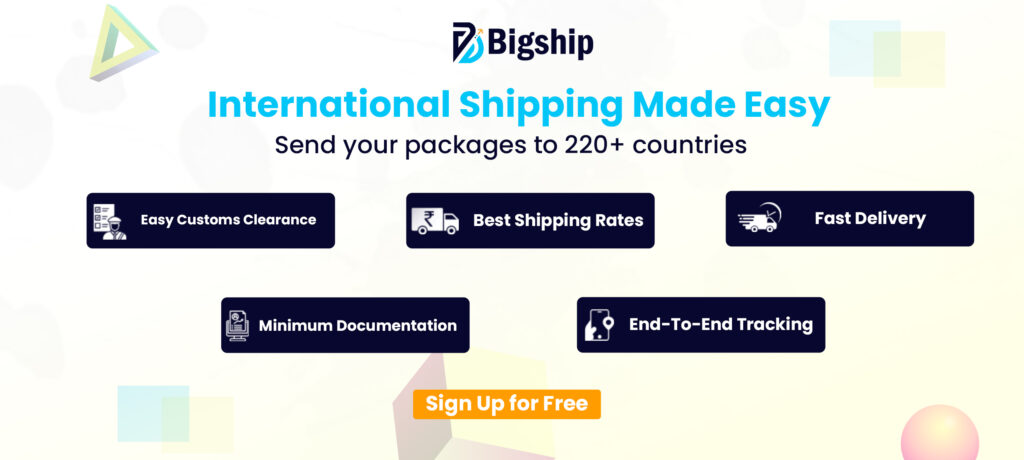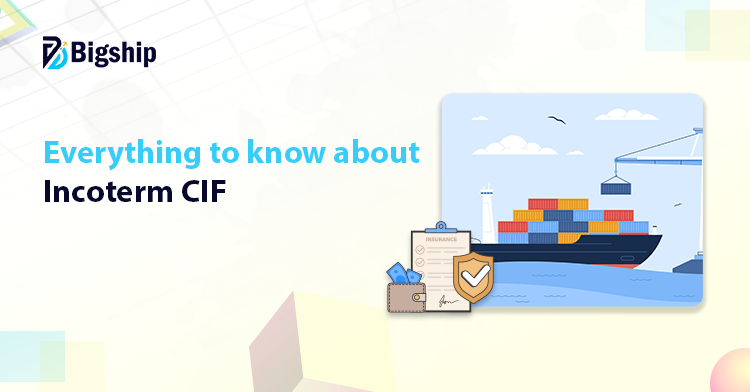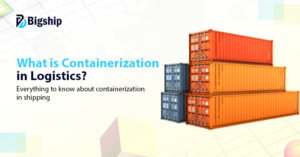If you deal in exports, you may have heard about the incoterm CIF. It is one of the most common international commercial terms in sea transport. CIF stands for cost, insurance, and freight. It explains who pays for what when goods move across countries.
In this blog, you will learn everything about CIF, including its meaning, seller and buyer obligations, and its pros & cons.

What is the meaning of the incoterm CIF?
CIF full form in export is cost, insurance, and freight. It is used when goods move by sea or inland waterway. Under CIF, the seller takes care of the cost to ship the goods. The seller also pays for insurance. And the seller pays the freight to bring the goods to the destination port.
Once the goods are loaded on the ship, the risk moves to the buyer. If the goods get damaged after that, it becomes the buyer’s responsibility. But the seller still pays the freight and insurance till the destination port.
In short, CIF means the seller pays for shipping, insurance, and freight, but buyer takes the risk once the goods are on the ship.
Seller obligations under CIF
Under cost, insurance, and freight, the seller has many duties. These duties are listed below.
- The seller gets the export license. The seller also arranges any checks on the goods, and packaging is also their job.
- The seller pays to load the goods at their port. All export duties and taxes are also covered by the seller.
- The seller ships the goods by sea or waterway. The cost to bring the goods to the destination port is on the seller, and the seller only pays for the insurance until the destination port.
- If the goods get damaged before reaching the ship, the seller covers that too.
Buyer obligations under CIF
When the goods arrive at the destination port, the buyer handles everything afterward. The duties of the buyer under CIF are mentioned below.
- The buyer pays to unload the goods from the ship. Moving the goods within the port is also the buyer’s task.
- The buyer arranges transport from the port to the final place. This includes delivery and unloading.
- All import duties, taxes, and customs charges must be paid by the buyer.
Benefits and drawbacks of CIF in shipping
Cost, insurance, and freight (CIF) has both good and bad sides. Let’s discuss both sides.
Benefits of CIF
Buyer has less to manage: The seller takes care of shipping and insurance. This makes the process easier for the buyer.
Lower risk for buyer: The seller pays for insurance. If the goods are lost or damaged during shipping, the buyer doesn’t bear this cost.
Clear money matters: Both the seller and the buyer know who pays for what. This helps with planning and budgeting of the export process.
Drawbacks of CIF
Buyer has lesser control: Since the seller arranges for almost everything, the buyer cannot choose the shipping company or method.
Claim process can be hard: If goods are lost or damaged, the buyer must go through insurance steps. This process can be slow or difficult.
Insurance may not be enough: The seller arranges basic insurance. If the buyer needs more coverage, it will cost extra.
Documents required for shipping under CIF
Under cost, insurance, and freight terms, some important papers are needed. These help in moving goods smoothly and keeping records clear.
- Bill of lading: It shows the deal between the seller and the shipping company.
- Commercial invoice: This lists the value of the goods and details of the sale.
- Packing list: This lists what’s inside the shipment.
- Insurance certificate: This certificate shows that marine insurance is in place for the shipment.
- Certificate of origin: This states which country the goods were made in.
Difference between CIF and FOB
Both CIF and FOB are used in exports, but they place responsibilities on different parties. Let’s analyze the difference between both terms.
| CIF | FOB |
| CIF stands for Cost, Insurance, and Freight. | FOB stands for Free On Board. |
| Under CIF, the seller pays for freight charges. | Under FOB, the buyer pays for the freight charges. |
| The seller arranges and pays for insurance. | On the other hand, under FOB, the buyer takes care of insurance. |
| Seller covers cost of goods, freight, and insurance. | Seller covers only the cost of goods and loading. |
| The buyer has less control over shipping choices. | The buyer has more freedom in choosing services. |
How does Bigship help you sell globally with ease?
Bigship, as a global courier aggregator, takes care of the tough parts of international shipping. It makes the entire process very smooth, right from booking the right courier partner to handling documents.
You don’t need to worry about customs, tracking, or delivery updates. Everything is managed in one place, saving your time and reducing mistakes. Even if someone is new to exports, Bigship makes it easy to start.
Key Takeaways
- CIF in shipping stands for Cost, Insurance, and Freight and is used only for sea or inland water transport.
- Under CIF, the seller pays for freight and insurance till the buyer’s port.
- The buyer takes responsibility once the goods reach the destination port.
- CIF gives sellers more control over logistics and carrier choice.
- CIF helps buyers by reducing their early shipping responsibilities.
Conclusion
CIF is a useful rule in global trade. It clearly states who handles the cost, insurance, and freight. CIF meaning in shipping becomes simple when the seller pays for the shipment till it reaches the buyer’s port. The buyer then takes charge from there. CIF gives less control to the buyer but takes away early shipping worries.
Bigship helps sellers follow cost, insurance, and freight rules without stress. It handles shipping, documents, and updates in one place. Sellers don’t need to chase agents or worry about delays. Bigship makes selling to other countries simple, even for those starting for the first time.
So sign up with Bigship and start exporting products to 190+ countries hassle-free.
FAQs
What is CIF?
CIF is a shipping term used in sea trade. It means the seller pays for the cost, insurance, and freight till the buyer’s port.
What is CIF used for?
CIF is used when goods are shipped by sea or inland water. It sets who handles cost, risk, and insurance.
What is CIF full form in export?
In exports, CIF stands for Cost, Insurance, and Freight.
What is the difference between CIF and FOB?
In CIF, the seller pays for freight and insurance. In FOB, the buyer handles freight and insurance.





